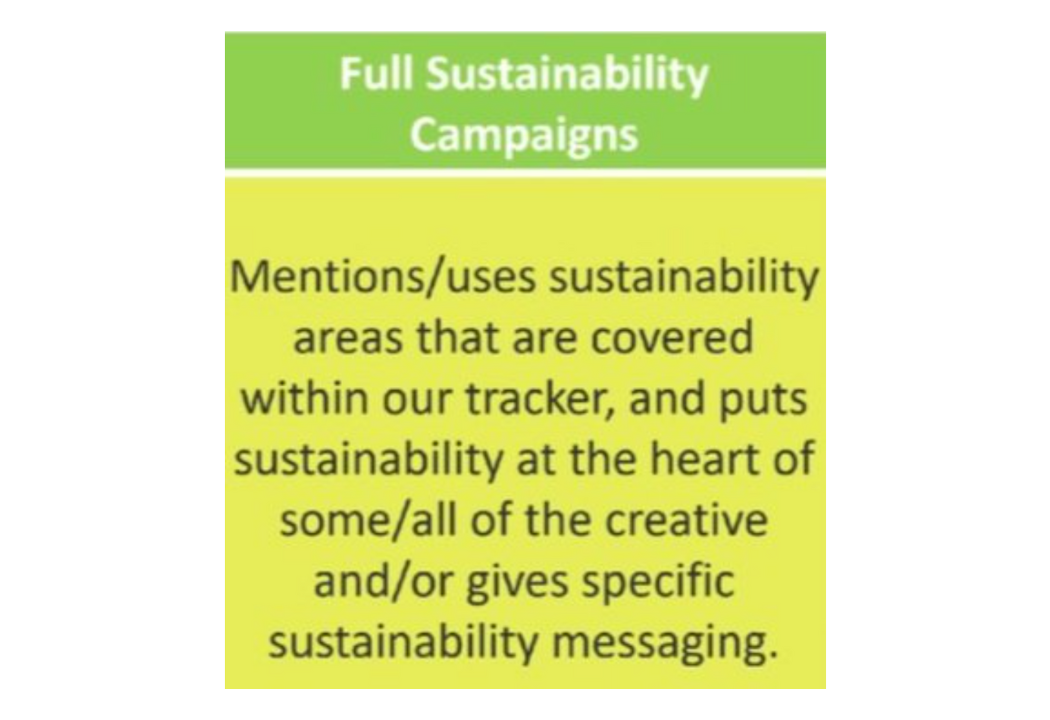
Author: Simon Clarke, On Device Research Asia | IAB SEA+India Data, Measurement & Impact Regional Council
What’s the current situation?
We have all seen the news about wildfires, floods and record temperatures. From the hottest global June on record to the last 9 years being the hottest of the last 10 years on record, it is difficult both to miss and to not be concerned.
Brands are recognising this within their DEI strategies and the digital advertising industry has also explored this with many discussions at conferences about the impact of the industry on carbon emissions.
In an article from a 2022 survey of IAB SEA+India members, Shilpa Kolte from Microsoft Advertising wrote that while 77% of respondents wanted to run greener ad campaigns, 80% of them said they didn’t know how to go about doing so.
Using Data and measurement to be more sustainable
Data can play a role in helping the industry as a whole be both more successful in communicating sustainability, while also reducing its carbon footprint. Being Sustainable isn’t just good for the planet, in most cases it simply makes good business sense.
Consumers are worried
To give a little regional context on whether sustainability is a relevant subject, I am going to share some information from the On Device Research sustainability in advertising white paper where we surveyed customers across South East Asia (Indonesia, Malaysia, The Philippines, Singapore and Thailand) and Australia to understand their concerns and behaviours.
Across the 6 markets, 84% claimed knowledge of sustainability, 71% were worried about environmental sustainability and 69% were willing to pay more for sustainable products.
By a small margin, respondents from The Philippines were the most concerned about environmental sustainability and more willing to pay more for sustainable products.
When it comes to making the change to sustainable products, 43% state price as a barrier to sustainability and 39% state practicality as another barrier.
How can brands make successful sustainability campaigns?
When brands have made the decision to be more sustainable, it is not surprising that they want to communicate these credentials. But, does sustainable advertising work and if so, how should brands approach this?
We reviewed data from 1,562 campaigns across Digital, OOH and Social Media to understand the use of sustainability messaging in ads and their impact on the brand funnel. Based upon this analysis, we created three campaign groups:
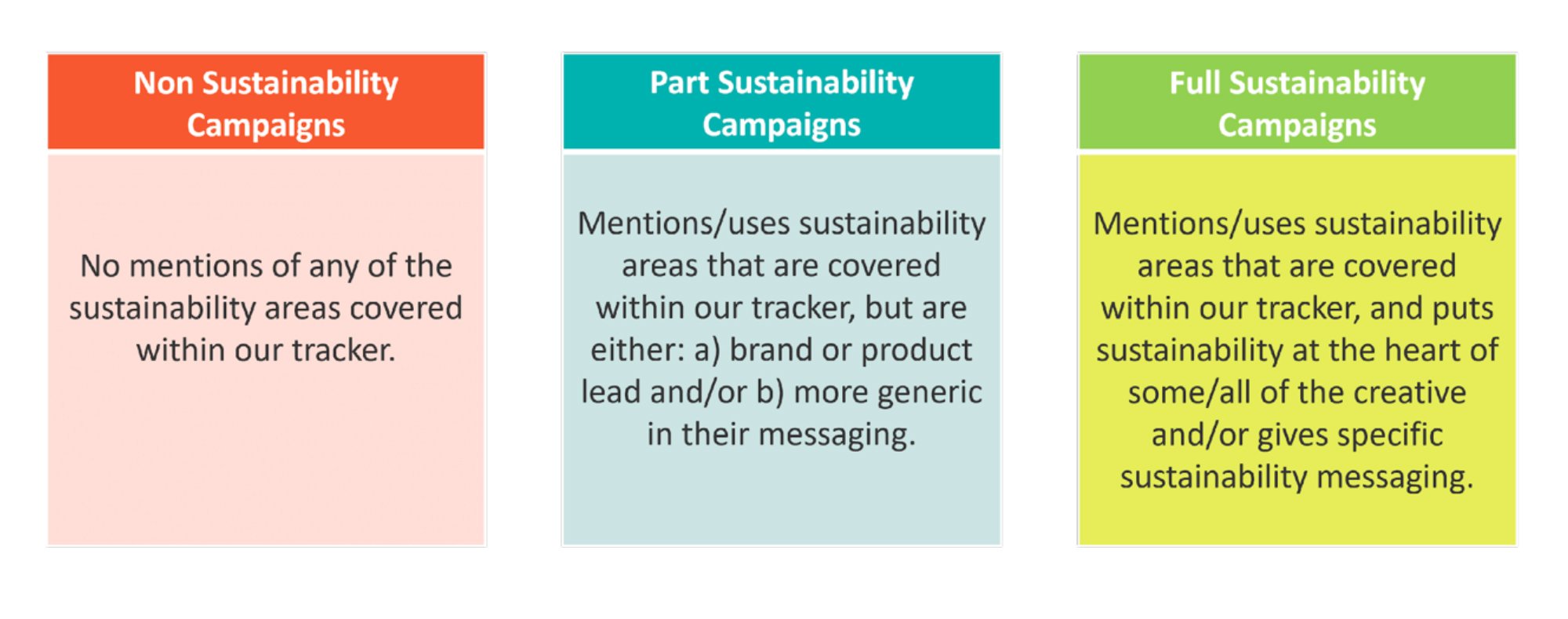
Diving into how each campaign group performed across brand funnel and creative metrics, we see that ‘Part’ sustainability campaigns perform worse than campaigns with no sustainability messaging at all for spontaneous awareness, ad recall and purchase intention.
Full sustainability campaigns perform as well as non sustainability campaigns for ad recall and crucially, perform best of all for purchase intention driving an average 2.5% uplift compared to control groups. This is versus non sustainability campaigns with 1.8% uplift and ‘Part’ sustainability campaigns with 1.4% uplift versus control groups.
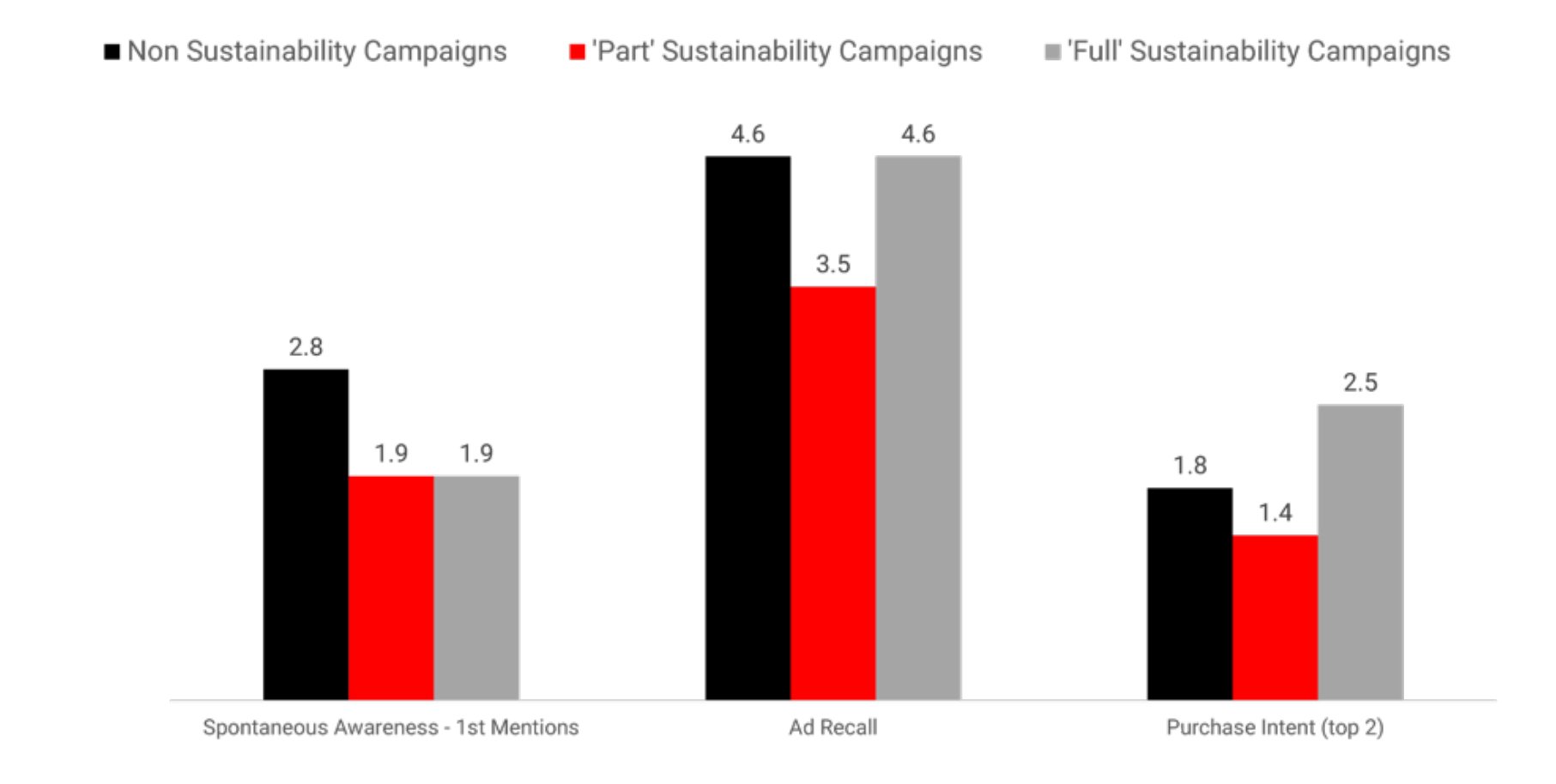
For the creative evaluation, fully sustainable campaigns perform substantially better than both non sustainable campaigns and ‘Part’ sustainable campaigns for positive creative engagement, demonstrated by 71.5% of exposed customers responding positively, versus 63.2% for non sustainability campaigns and 62.2% for ‘Part’ sustainability campaigns.
This also translates into taking action, with 59% of customers for ‘Full’ sustainability campaigns versus 56.7% for non sustainability and 50.2% for ‘Part’ sustainability campaigns, saying they will perform a call to action following seeing the advert.
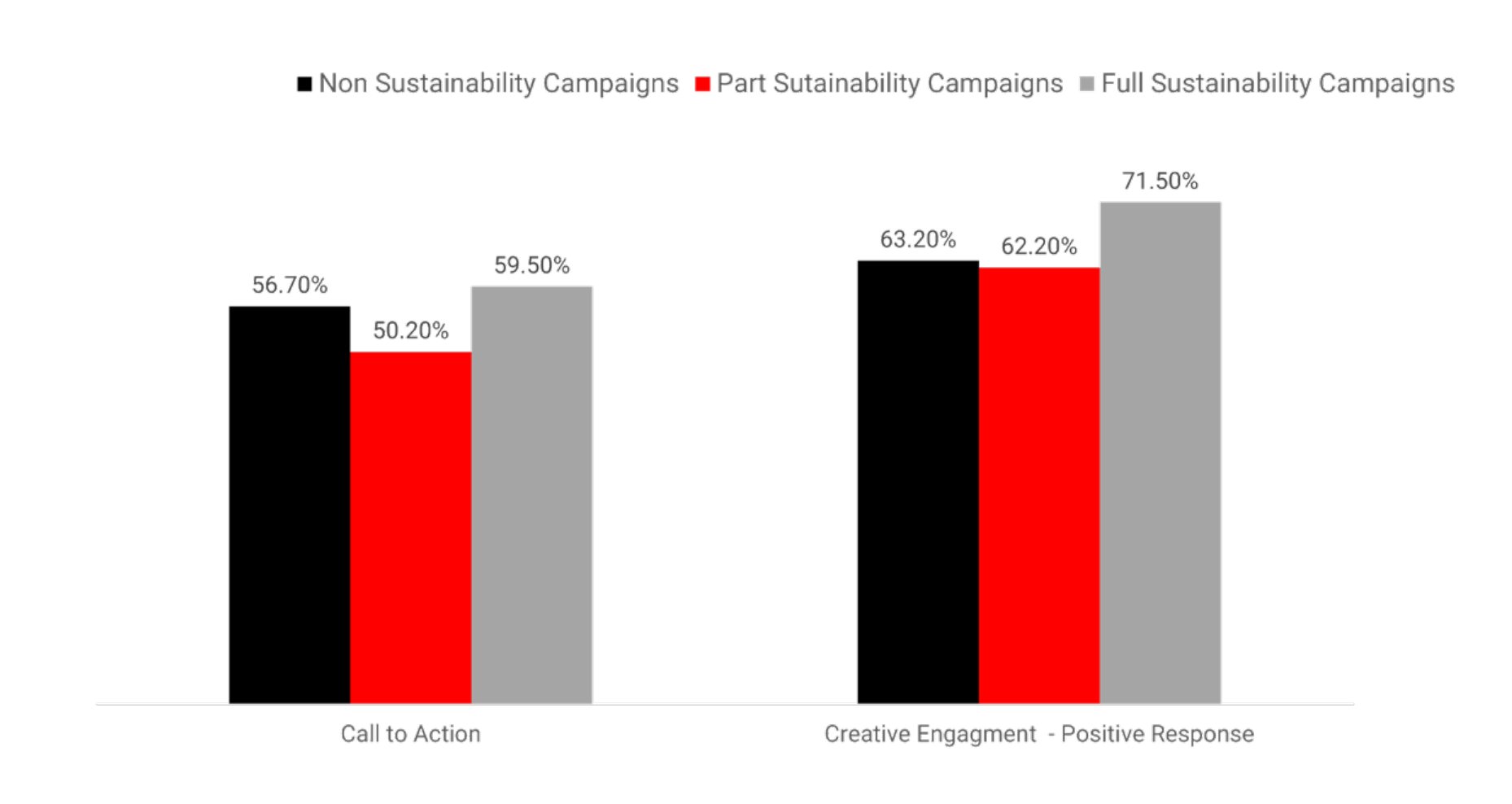
Full sustainability messaging in ads work for moving key funnel metrics such as purchase intention and creatives using a fully sustainable message resonate well with consumers, leading to strong positive calls to action.
Consumers are savvier than ever against greenwashing and therefore full authentic commitment from brands is a must. Our creative learnings suggest success in sustainability is driven via clear messaging linking their correlation to the cause while delivering messaging in a positive tone.
Why should digital media avoid waste and be more sustainable?
Like every industry, the digital media industry contributes to carbon emissions. Digital technology produces 4% of the world’s carbon footprint and is growing at 9% per year and the internet emits 1.6bn annual tons of greenhouse gases.
By using data, we can identify further steps the digital media industry can take to be more efficient in terms of reducing waste and ensuring that the impressions that are used have greater effect.
Frequency and Attention
We have seen some campaigns where the frequency customers see the ads gets very high. In some cases this can be effective in reinforcing the message, and the time period of the exposure plays a major part, but this can also have a detrimental effect as it creates fatigue among customers.
One campaign we saw had a very high frequency in a relatively short period of time (exposed customers to a frequency of up to 60 impressions). However, after 12 exposures we saw no additional benefits in terms of moving the KPI for the brand.
There have also been a number of reviews of the impact of attention. A study of 16 campaigns published by Teads found that low viewability has poorer outcomes for ad recall and awareness.
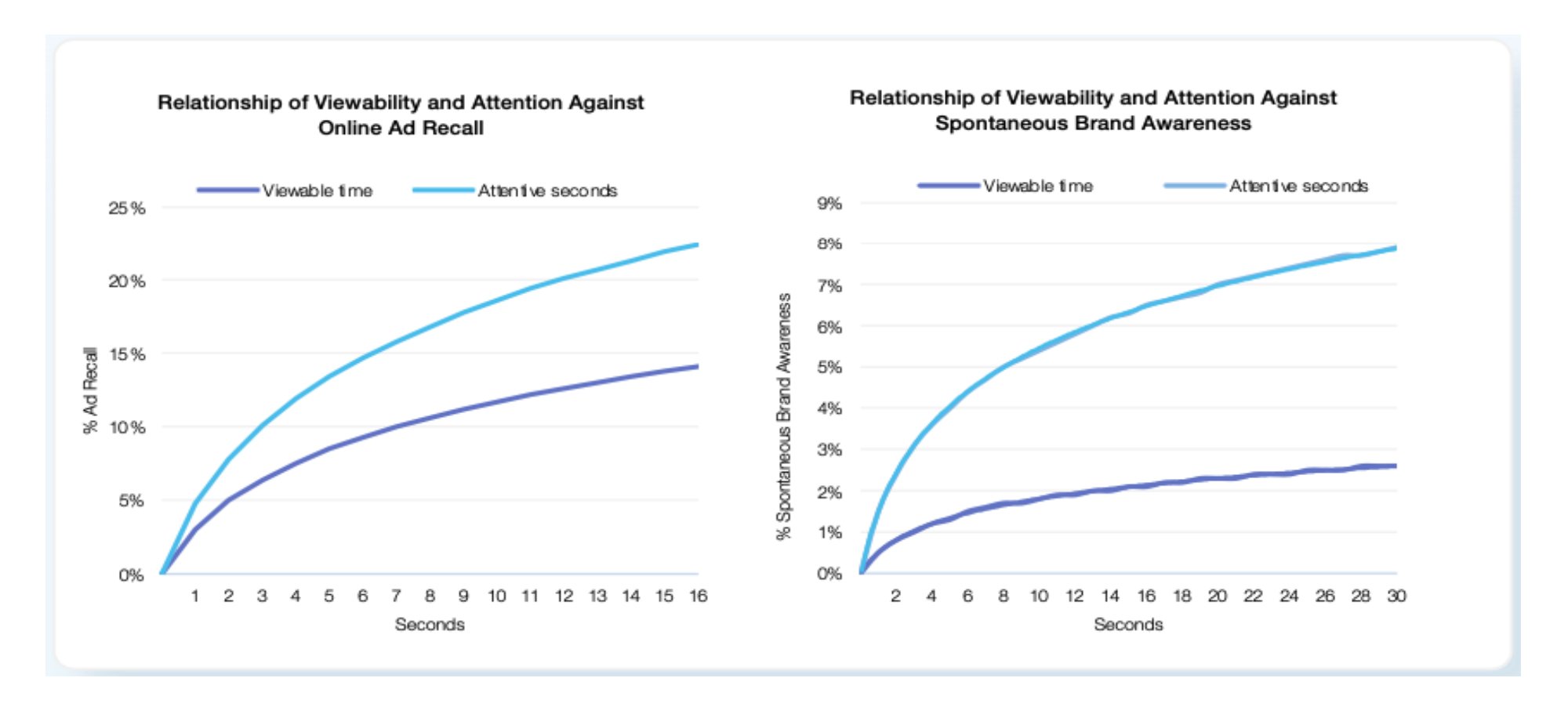
Incremental Reach – Media Mix optimisation
Most campaigns use a combination of media platforms to reach their customers, but there’s still little measurement and understanding of the effectiveness of exposure to multiple media on KPIs. We utilised our On Device Research metered panel to understand the impact of a campaign across two social media channels, Facebook and YouTube, identifying panelists who were exposed to the campaign on each or both platforms.
We found that the campaign had a total reach of 31% of panelists with 4% exposed on both platforms. Those exposed to the campaign on both channels had higher uplifts of awareness than those exposed on just one channel.
However, those exposed only on Facebook had higher levels of purchase intention than those exposed on just YouTube or on both platforms. While positive creative messaging was strong on both channels, we found that there were higher negative creative engagements from those exposed on both channels, suggesting some creeping fatigue with increased exposure.
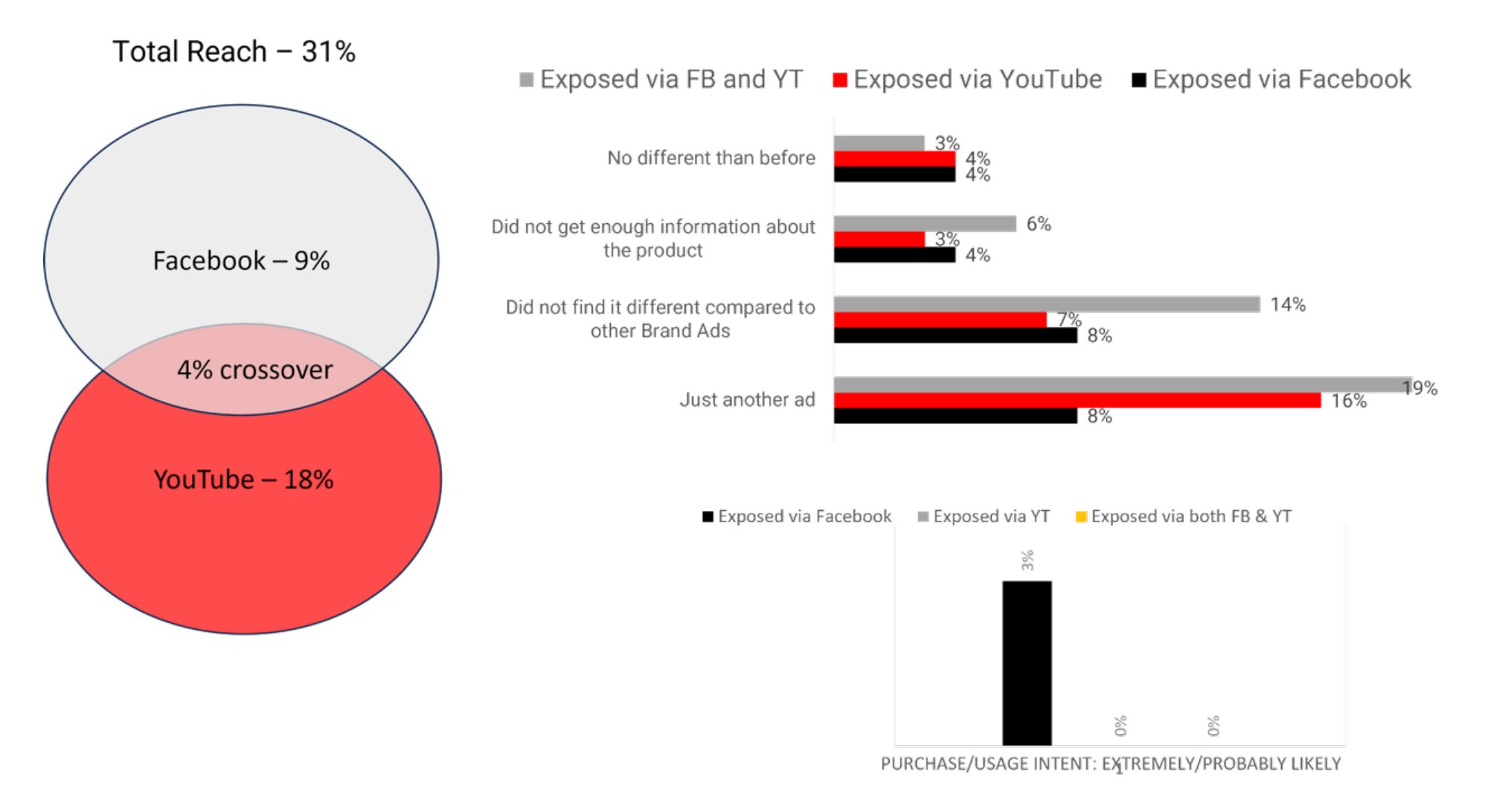
It will come as no surprise that, just like in the wider media world, different digital media have different outcomes for campaigns. It is important to ensure that you are utilising the correct media for your campaign. Of course, this can vary by many factors, including the type of brand, category, the quality of the creative and many of the factors already mentioned previously.
We analysed our normative database for the impact through the brand funnel of different digital media to understand which have the biggest uplifts to each metric.
Display ads are more likely to move the top of the funnel, with video ads more likely to move lower funnel metrics. Audio plays a strong role in moving Purchase Intention at the very bottom of the funnel and within social media, influencer campaigns have the strongest impact on purchase intention.

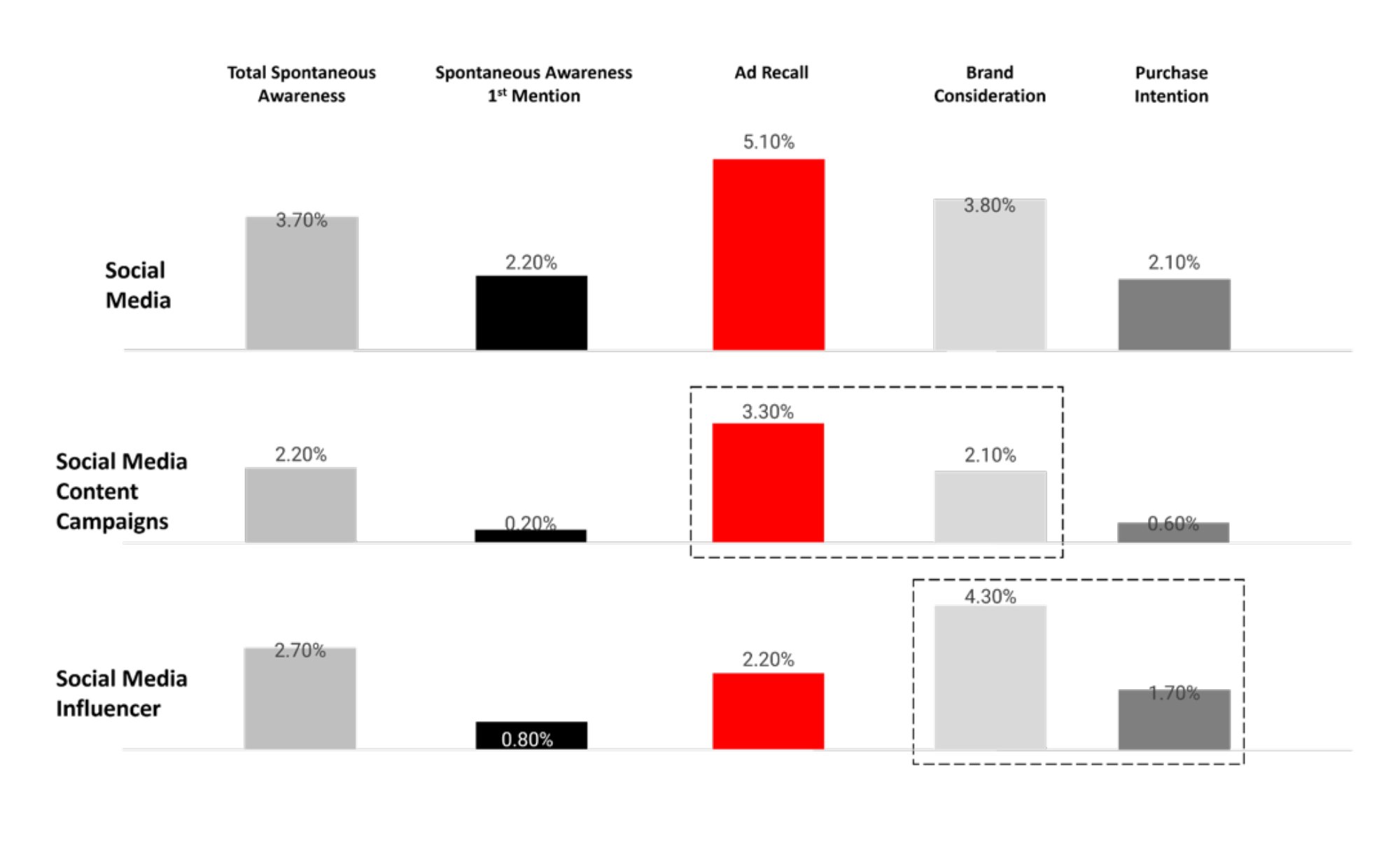
There is now a wealth of data available that we can leverage to reduce waste and become more sustainable, helping both the planet and the bottom line for agencies and their clients.

